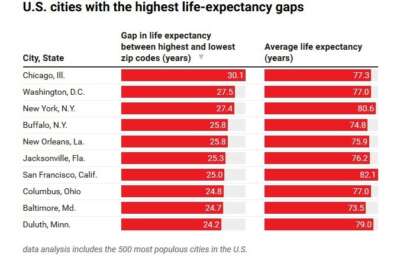
How average are you and what does it matter?
Even in the federal government where workers are supposed to be treated the same and be paid based on their grade level, there are differences. Take the two main...
While many people say, out loud, they are average, secretly many of us actually believe we are just a tad better than that. Maybe more than a tad. Okay, maybe a lot more!
And looking at the numbers, just how “average” you are can determine how long you will have to work, and how much you will have to invest/save to supplement your retirement income. Especially for feds. Because…
Even in the federal government where workers are supposed to be treated the same and be paid based on their grade level, there are differences. Take the two main retirement systems. Federal Employees Retirement System (FERS), which covers about 96% of the workforce vs. the Civil Service Retirement System (CSRS), the old plan which covers the rest. FERS includes a reduced government annuity, Social Security and the Thrift Savings Plan, with partially matching contributions from the government. CSRS provides a more generous benefit (which workers pay more for), but does not include Social Security. CSRS employees do not get a match to the TSP. So what does that mean in a pension-to-pension match?
According to the Congressional Research Service, the average person retiring under CSRS in FY 2108 got an annuity of $4,973 per month compared to $1,834 for FERS retirees. This is another reason those covered by the FERS plan must contribute to the TSP if they hope to match income in retirement. CSRS annuities like Social Security are fully indexed to inflation. If living costs go up 2.9% (as measured by the Labor Department’s CPI-W) those retirees get a 2.9% cost of living adjustment. But FERS employees are under a diet-COLA system. If inflation goes up 2.9%, FERS retirees get only 2%. Over long period of inflation—anything over 2%—the buying power of a FERS annuity shrinks.
While most current workers are under the FERS program, the majority of people (67% of the total) who are already retired did so under the more generous CSRS plan.
The Trump administration has again asked Congress to make major changes (reductions) in the CSRS and FERS retirement programs. And to eliminate a special and valuable pre-Social Security supplement for people retiring before age 62. And to cut the interest rate of the G-fund, a favorite TSP investment for many workers and retirees.
So just where to you stand in relationship to fellow workers or retirees. Check out this portion of a Congressional Research Service report on the federal civil service workforce:
- In FY 2018, 96% of current civilian federal employees were enrolled in FERS,
which covers employees hired since 1984. 4% were enrolled in CSRS,
which covers only employees hired before 1984. - In FY 2018, more than 2.6 million people received civil service annuity payments, including 2,132,713 employee annuitants and 514,266 survivor annuitants. Of these individuals, 67% received annuities earned under CSRS.
- About a third of all federal employee annuitants and survivor annuitants resident five states: California, Texas, Florida, Maryland, and Virginia.
- The average civilian federal employee who retired in FY 2016 was 61.5 years old and had completed 26.8 years of federal service.
- he average monthly annuity payment to workers who retired under CSRS in FY 2018 was $4,973. Workers who retired under FERS received an average monthly annuity of $1,834. Employees retiring under FERS had a shorter average length of service than those under CSRS. FERS annuities are supplemented by Social Security benefits and the Thrift Savings Plan (TSP).
- From FY 1970 to FY 1985, the number of people receiving federal civil service annuities rose from fewer than 1 million to nearly 2 million, an increase of 105%. Between FY 1985 and FY 2018, the number of civil service annuitants rose by 694,000, an increase of about 35%.
- In FY 2018, the number of civilian federal employees, including Postal Service employees, totaled 3.3 million workers. This was 254,000 fewer than the number of employees in FY 2000, and 480,000 fewer than the number of employees in FY 1994.
- In FY 2018, all CSRS employees were aged 45 or older, compared with 61% of FERS employees who were aged 45 or older (38.9% of FERS employees were younger than 45). 67% of CSRS employees were aged 60 or older, whereas 14% of FERS employees were in this age range.
To read the full CRS report, click here.
Nearly Useless Factoid
By Alazar Moges
Due to a metal shortage during World War II, Oscars were made of painted plaster for three years. Following the war, the Academy invited recipients to redeem the plaster figures for gold-plated metal ones.
Source: Oscars
Copyright © 2025 Federal News Network. All rights reserved. This website is not intended for users located within the European Economic Area.
Mike Causey is senior correspondent for Federal News Network and writes his daily Federal Report column on federal employees’ pay, benefits and retirement.
Follow @mcauseyWFED





